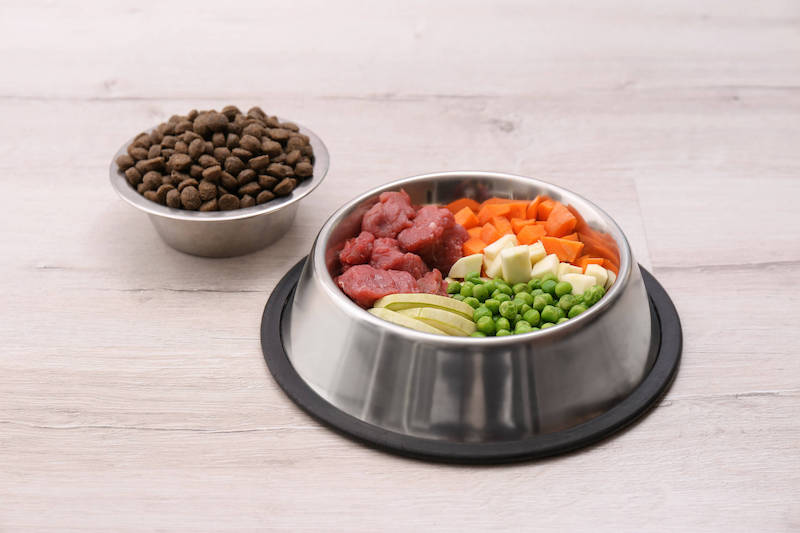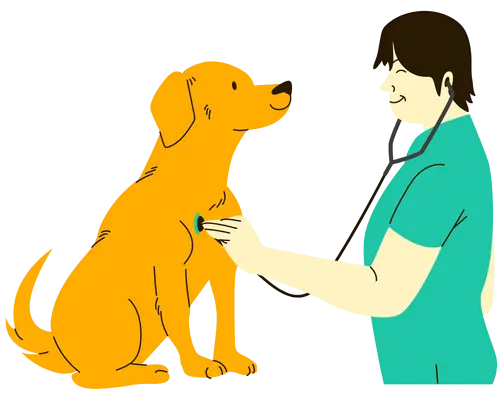Do you know what DOG ESSENTIALS you are missing out? Find out now!
Zack Keithy, our author, is a certified veterinarian technician (UC Blue Ash) for over 6 years (contact him here). The articles written here are based on his expertise and experience, combined with a review by our expert vet reviewers including Dr M. Tarantino. Learn more about us here.
A dog’s diet is considerably different from us humans, and as owners, we need to be careful with what we feed our dogs. In this post, we look into the question of, can dogs eat marrowfat peas?
Yes, dogs can eat marrowfat peas, but it must be done in moderation and together with a healthy and well-balanced diet. Too much can cause issues like flatulence. Dogs can also eat other types of peas which may contain lots of nutritional value for them.
In this post, you will learn more about marrowfat and other peas and how you can introduce them into your dog’s diet.
Medical Questions? Talk to a Veterinarian 24/7.
Connect one-on-one with a licensed vet who will answer your questions in minutes.
*Article may contain affiliate links to retailers like Amazon and Chewy. Learn more on our disclosure page.
What are marrowfat peas?

Marrowfat peas are green-grown peas dried naturally in the field.
They are used to make mushy peas because they are starchy.
In the UK, the snack food sector prefers dark green Marrowfat peas, whereas canning uses lighter-colored peas.
Mushy peas are best made with peas that have thin skin and a squishy feel.
Traditionally, marrowfat peas are used to manufacture Mushy Peas, as well as wasabi peas, which are made from this pea species.
Their starch content is more than that of normal peas, and they’re larger.
Ordinary peas will have a different texture than mushy peas because of this.
Doggy says, you might be keen to read this too: Can dogs eat farro?
Are mushy peas high in fiber?
One serving of mushy peas has 12% of the daily required amount of fiber, which is 18g.
As a strong source of fiber, mushy peas are an excellent addition to any diet.
Consuming a lot of fiber may also help lower the risk of developing some types of cancer and type 2 diabetes.
Fiber-rich peas come in a variety of forms, including fresh green peas and dried peas.
Pea fiber as a useful food ingredient has been studied by food technologists.
Use fresh or frozen green peas or dried peas in meals like soups, stews, sides, casseroles, salads, and dips to get the most out of your peas.
What kind of peas are good for dogs?
Peas are safe for dogs to consume.
There are several different types of peas that dogs can have in their food bowl without any problems.
Peas are a good source of various vitamins and minerals, as well as protein and fiber.
Fresh or frozen peas are fine to feed your dog. However, canned peas with additional salt content must be avoided.
You should feed your dog green peas like garden peas, snap peas, and snow peas.
Even though dogs, unlike humans, do not require vegetables and legumes for a well-balanced diet, peas are a convenient and pleasant snack, and they include a surprising number of vitamins, minerals, and antioxidants that can be beneficial to your dog’s overall health.
Green peas are also nutritious dog treats because they are abundant in vitamins A, K, and B.
Additionally, peas are a good source of fiber and contain significant amounts of the minerals iron, zinc, potassium, and magnesium.
The fact of the matter is that dogs can safely eat peas because they are not toxic or dangerous to them.
Peas are also loaded with vitamins A, B, and K, as well as zinc, iron, and potassium, all of which are beneficial to dogs’ health.

Is eating too many peas bad for dogs?
Peas might upset your dog’s stomach if you give them too many, so only give them a small amount at a time.
Dogs with renal problems should not be fed peas.
Peas include purines, which are generally safe for dogs’ kidneys but can be harmful if they are already sick.
Purine, a chemical found in peas, has the potential to upset the stomach of some dogs when consumed in large quantities.
Dogs’ kidneys filter out uric acid, which is formed from the purines, a naturally occurring chemical molecule.
Peas contain uric acid, which can lead to kidney stones in dogs who already have kidney issues.
Some dog breeds, such as dalmatians, are susceptible to high uric acid production due to purine metabolism difficulties.
Diets high in digestible protein like chicken are ideal for dogs who have trouble metabolizing purine. As a result, there will be fewer problems with urate formation.
Hey there, sorry to interrupt but I wanted to tell you about an online vet service I’ve been using for years.
An in-person visit with one is great, but it’s not always an option.
Now, thanks to technology, you can speak to one without leaving your home.

Got something to ask a vet?
Talk to one anytime, 24/7.
* Don’t use this service for emergencies.
Alternatively, a vet can come out to you instead (exclusive to our readers: use THEVETS15 for 15% off).
SCHEDULE AN APPOINTMENT HEREThank you. The rest of the article continues below.
Do peas cause heart problems in dogs?
To find out if peas are a leading dog food component contributing to an increase in diet-associated canine cardiac disease (DCM), Tufts University researchers published a study in August 2021.
It’s believed that DCM is caused by eating pet meals high in peas, lentils, other legume seeds, or potatoes. This results in a smaller heart and a larger heart.
Researchers compared regular dog feeds to diets linked to canine heart disease and branded “grain-free” by the FDA in the study. Peas came out on top in a study of more than 800 chemicals as components to avoid if you have a dog with this type of heart disease.
For those suffering from diabetes mellitus, “grain-free” diets are those that exclude grains such as wheat, rice, and corn. Instead, they include foods like beans and peas to make up for the lack of grains.
How many peas can a dog eat?
Even for a large dog, a mouthful of peas is more than sufficient.
To avoid bloat and flatulence, feed peas in moderation.
For little breeds, use a teaspoon of peas; for large breeds, use a tablespoon.
You should only offer your dog one or two peas if they have never eaten them before to check if they like them.
Giving your dog an excessive amount of peas can result in gas and gastrointestinal discomfort, so practice moderation while feeding it.
Dogs with renal problems should not be fed peas. Peas include purines, which are generally safe for dogs’ kidneys but can be harmful if they are already sick.
When giving your dog treats of mushy peas, follow the 10-percent rule.
A complete dog meal like Purina Pro Plan must account for 90% of your dog’s daily caloric intake. Treats and extras, such as peas, can account for up to 10% of their required daily calorie intake.
Despite the nutritional value of peas, the amount that is given to a dog should not be overlooked as they might cause bloating when given in excess. You should also not give peas to a dog who has a history of kidney disease.
Despite being low in calories, these little green balls are packed with protein and fiber, making them a substantial snack for your dog without adding a ton of extra calories to the dog’s diet if given in moderation.
Conclusion: Can dogs eat marrowfat peas?
Peas are perfectly safe for dogs to consume, including mushy types made from marrowfat peas. As long as there is no added salt or preservatives, peas are ideal as dog treats.
As always, practice moderation and always start slowly to gauge if your pet likes them.
Most importantly, you should ensure that your dog is receiving a high-quality and nutritious diet in order for it to grow healthily.



